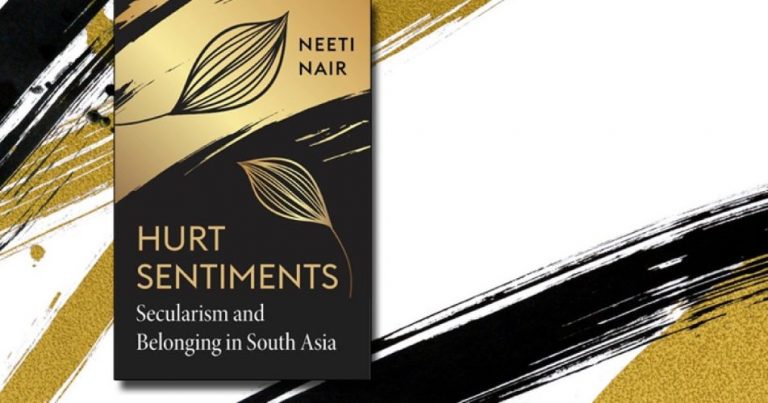
Had Pakistan lived up to the proclamation of Jinnah, it would have become the poster boy of secularism in South Asia. Instead, over the last 75 years, the Quaid’s words have been ignored, denied, censored, and perverted
MANI SHANKAR AIYAR
In the Introduction to her brilliant book, Hurt Sentiments, Professor Neeti Nair of the University of Virginia recalls that at the instance of Mahatma Gandhi, the All-India Congress Committee passed a resolution in December 1947 affirming that independent India would be “a secular state where all citizens enjoy full rights and are equally entitled to the protection of the State, irrespective of the religion to which they belong”. Straightforward and simple, it was based on two fundamental principles: equality of rights for majority or minority; and “protection of the state” to all communities, but especially to the more vulnerable minorities.
But once it came to debating the place of the minorities in the Constituent Assembly, it became clear that there was no consensus on what special steps, if any, needed to be taken to afford the minority’s adequate representation to secure their due place in running the affairs of the Indian state. Back in March 1947, Dr. B.R. Ambedkar had argued in his publication States and Minorities, that: “Indian Nationalism has developed a new doctrine called the Divine Right of the Majority to rule the minorities according to the wishes of the majority. Any claim for sharing power by the minority is called communalism while the monopolizing of the whole power by the majority is called Nationalism.” Hence, he held, it was necessary to ensure “effective representation” through “weightage”.
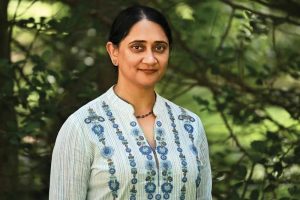
Encouraged perhaps by this robust defense of the right of minorities to share power, their representatives in the Constituent Assembly—particularly Z.H. Lari of the United Provinces; Kazi Syed Karimuddin of the Central Provinces; Syed Hasan Imam of Bihar; and Chaudhry Khaliquzzaman (until he moved to Pakistan)—put forward a number of suggestions on how to ensure such adequate representation through “separate electorates”; “proportional representation by a single transferable vote”; “cumulative voting”; “proportional voting with multi-member constituencies and plural voting”; “multiple constituencies with cumulative voting”. There was, however, little traction for these proposals in the House. So, as the author shows, when the issue was remitted to the Minorities Sub-committee that convened in Simla on May 11, 1949, no minutes were kept (or, at any rate, revealed) and it was announced that proposals for “reserved seats for the minorities” had been dropped.
Reporting this to the Constituent Assembly a fortnight later, Sardar Patel affirmed that there was “nothing better for the minorities than to trust the good sense and sense of fair play of the majority and to place confidence in them”.
And what of Nehru? Nehru had lauded “the glory of India” as combining “infinite variety” with “unity in that variety” and sought reliance on that, instead of “creating barriers” that “permanently isolate” the minorities while “giving full opportunity to every minority.” He and Patel added, as an earnest of their intention, that “special efforts” would be made “to put up good Muslim candidates … We should try to give them representation in accordance with their numbers”. They urged the minorities, says the author, to “trust us and see what happens”.
Dr. Ambedkar, after arguing on the floor of the House that “it is wrong for the majority to deny the existence of minorities. It is equally wrong for the minorities to perpetuate themselves,” held out against “separate electorates” but favored “reservations”.
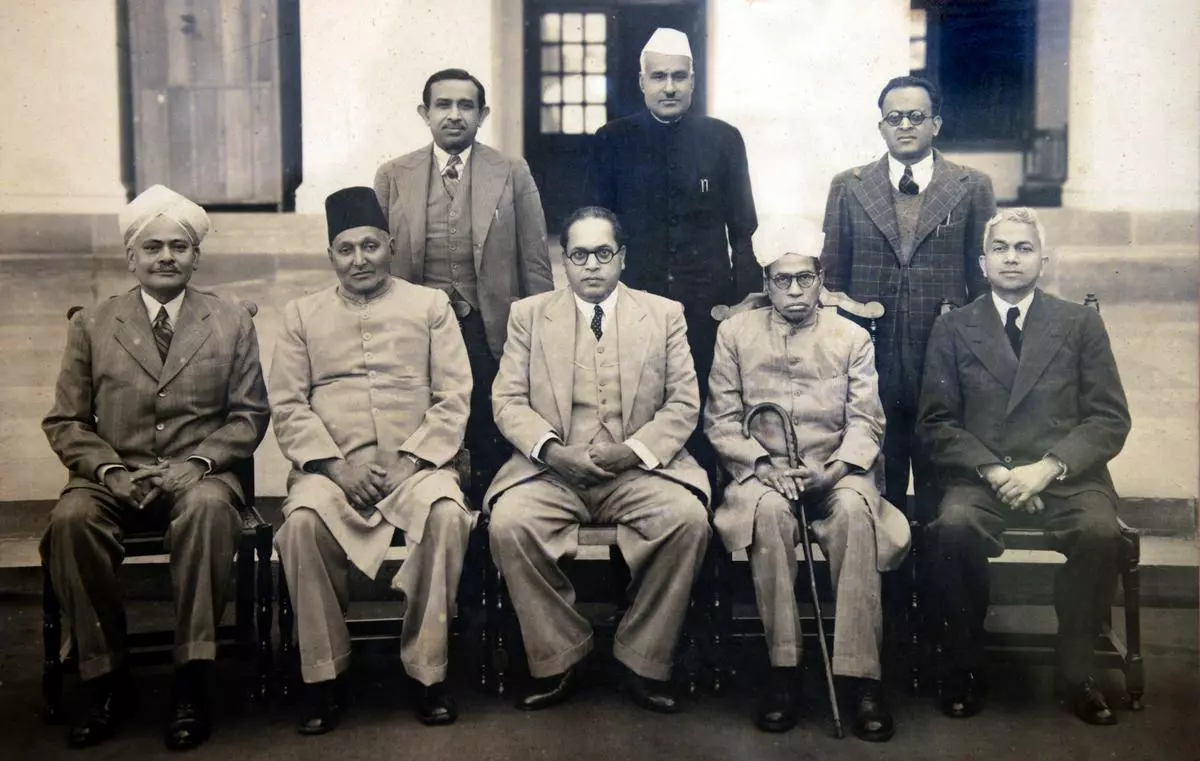
Mahatma Gandhi had been assassinated; so, he was not there to remind the Constitution-makers that: “Minorities have rights for which they must fight unto death. They must not adopt an attitude of giving up rights or (be) made to purchase the good will of the majority.”
In consequence, Nair notes, the Muslim members “were unanimous, with varying emphases, in affirming their faith in the goodwill of the majority community”.
Under-represented minorities
The eventual outcome of reposing their “trust” in the majority is that at the end of the day, Muslims have never had anything like representation in the legislatures in proportion to their share of the population and the share has now, alas, sunk in the Lok Sabha to an abysmal 4 per cent, under a third of their ratio to India’s population. The Sikhs have fared marginally better largely because Punjab has been reconstituted and Sikhs are the dominant political force there. And if the Christians have done somewhat better than the Muslims, it is largely owing to their geographic concentration in parts of Kerala, some central Indian tribal communities, and the north-eastern hill States. Yet, the hard and sad fact is that the minorities are hopelessly under-represented in our electoral system.
In the services too, as well as in corporate ownership and governance, non-governmental organizations, academia, or journalism, Muslim representation has been far below their share of the population. Perhaps the one exception is top places in Bollywood and the arts generally. Some (but not all of this) is deliberate; principally the cause, except in legislatures, is that in education and general living standards, the Muslims have tended to fare worse than even the Scheduled Castes, as the Justice Sachar report of 2006 revealed. This, in turn, is explained by the leadership of the Muslim community, particularly in northern and western India, having decamped to Pakistan, leaving behind to India’s tender mercies the Pasmanda Muslims, that is, the economically, educationally, and culturally deprived elements of the Muslim community.
While the minorities were being urged to “trust” the “good sense and good will” of the majority, the argument over what is the definition of “secularism” and how it is to be implemented continued to be played out inside but mainly outside the Constituent Assembly. It was mainly outside because the Hindu Right was virtually unrepresented in the House, with the notable exception of Syama Prasad Mookerjee, Minister for Industry. He was constrained by being a member of the Cabinet.
So K.R. Malkani, displaced from Sindh where the Hindu population of Karachi shrank from 51 per cent on the eve of Independence to 2 per cent by the first Pakistani census in 1951, took up cudgels against any “appeasement” of the Muslim minority. He thundered in the Organiser, which he edited, with reference to the Bharatiya Jana Sangh which was then in the offing: “The new party must adopt Hindu ideals and Hindu festivals, Hindu shrines and Hindu sacred cities, Hindu philosophy and Hindu culture, Hindu ceremonies and Hindu pujas, Hindu history and Hindu race experience—as its root foundations” (5/6/1950).
“For Mahatma Gandhi, secularism meant inalienable “rights” for the minorities for which they must “fight unto death”
That injunction appears now in 2023 to have reached its zenith.
In another article, under his pseudonym “Kamal” (lotus), Malkani proclaimed: “[T]he story of Islam is the story of violence, hate, murder, loot and rape.”
Meanwhile, the Hindu Mahasabha, condemning the “unscrupulous zealots of western secularism” asserted that: “Hindus have not only learnt it (secularism), but actually practiced it with success for centuries.”
However, another contributor to the Organizer demurred (while implicitly accepting that Hinduism was secular): “[E]qual respect for all religions has been the bane of Hinduism.”
What the Hindu Mahasabha aimed for was the “welding of conflicting elements in the state population into one homogenous nationalistic state based on the ancient culture of the land” (emphasis added).
Thus, Indian secularism, according to this school of thought, was to be secured through adherence to Hindu culture which was deemed to be essentially “secular” and aimed eventually at making the nation “homogenous” and founded in the “ancient culture” of the land.
This, shows Nair, led V.D. Savarkar to write letters to his followers to eschew “the mumbo-jumbo of Gandhian morals” and instead “take up the cause of Hindus for a Hindu India”. It also led Godse to argue in court that “because Gandhi appeased Muslims, Godse had to kill Gandhi” and that “retaliatory action” by Hindus was “at times also as spiritual and natural as kindness”.
But apart from some dissenting voices such as these, there was general agreement across the board that India would have to be “secular”—although there were wide and seemingly irreconcilable differences on the meaning and implications of secularism. Thus “secularism” as a word became, says Nair, “a means of papering over differences of opinion”. These differences were by no means confined to the ideological battle between the RSS/Hindu Mahasabha, on the one hand, and the “secular forces”, on the other. The word also “papered over” the numerous differences, sharp and subtle, in the secular camp on the meaning or definition and implications of “secularism”, and how it was to be implemented over the process of nation-building in Independent India.
Gandhiji reinforced his perception with the injunction: “I would not allow the Mussalmans to crawl on the streets in India. They must walk with self-respect.”
The most clear-eyed in the secular camp was Mahatma Gandhi. We have already seen that for him, secularism meant inalienable “rights” for the minorities for which they must “fight unto death”. For him, this meant “India would be a land where the people of every religion would live with equality, practice their religion fearlessly, and fully belong” (emphases added). Till date, the three key requirements for minorities to live in India is with their identity intact, their dignity unimpaired, their security assured. Without these three requirements being so much part of our composite nationhood that they may be taken for granted, the minorities, especially the large Muslim minority, will not feel they “belong” as they sense they are “not wanted”. That is the dilemma facing minorities everywhere in South Asia. Hence this book.
Gandhiji reinforced his perception with the injunction: “I would not allow the Mussalmans to crawl on the streets in India. They must walk with self-respect.”
In contrast to the wholesale denigration of Islam that characterized his ideological opponents on the Hindu Right, he held that “Islam stands for the unity and brotherhood of mankind, not for disrupting the oneness of the human family” (Harijan, 6/10/1946). While, therefore, emphasizing “equal regard for all religions” (Ishwar Allah Tero Naam) as the definition of secularism, and holding that “the preservation of pluralism was a public good” (Rochona Bajpai), Gandhiji elaborated that it ”entailed the freedom to practice religion, all religions, publicly”. The makers of the Constitution, on the other hand, while accepting this, stressed the right to freely practice religion, all religions, “privately”—as the State had no business to involve itself in religion. In opposition, others (even many within the ruling party) held that secularism “did mean the separation of religion from politics”, even if it was only the saffronites who went further to assert that “it most certainly did not mean equal respect for all religions”.
In consequence, both in theory and in practice, the author finds, there was a “steady chipping away at minority rights in the course of the drafting of the Indian constitution…political safeguards were whittled down and removed from the final draft of the Constitution”. It leads her to the somewhat exaggerated conclusion that in the end “little” remained to “distinguish between the Congress and the Hindu Right on their attitudes towards the Muslim minority problem”—somewhat exaggerated because while the Hindu Right sought to “nationalize” the minority in the name of “integration”, the Congress sought to reassure the minorities that the innate secularism of Indians, and particularly the Congress party, guaranteed an honorable and equitable place for the minorities in the life of the nation—an assurance that has often been breached and increasingly so since 2014.
The “minority problem” in Pakistan
Nair then moves, fascinatingly, to comparing and contrasting the process of dealing with the non-Muslim “minority problem” in united Pakistan (and, subsequently, in Bangladesh, after the secession of East Pakistan in 1971).
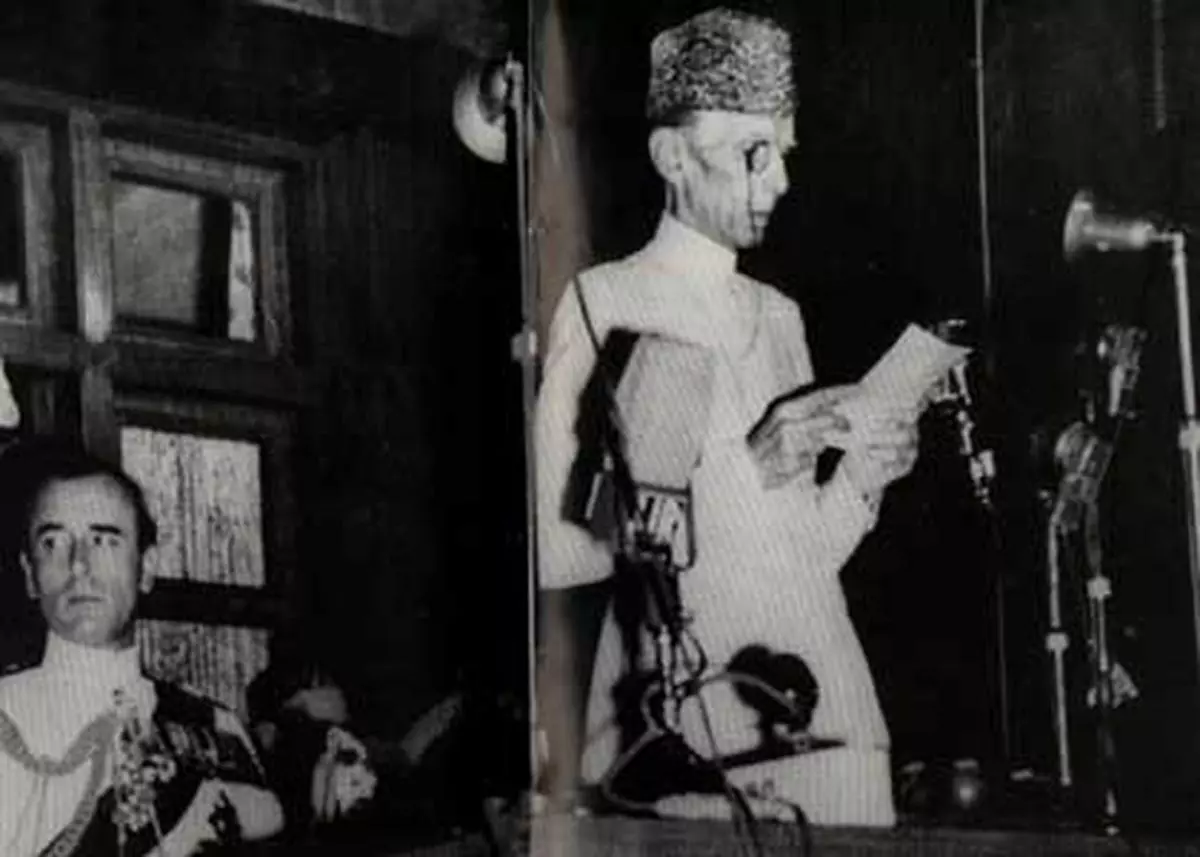
It was Quaid-e-Azam Muhammad Ali Jinnah himself who kicked off the debate with his inaugural address to the Pakistan Constituent Assembly on August 11, 1947, with a speech that might have been written by Nehru: “You are free; you are free to go to your temples, you are free to go to your mosques or to any other place of worship in this State of Pakistan. You may belong to any religion or caste or creed—that has nothing to do with the business of the State.”
Had Pakistan lived up to that proclamation, it would have become the poster boy of secularism in South Asia. Instead, over the last 75 years, the Quaid’s words have been ignored, denied, censored, and perverted. It only ignited a controversy that remains alive to this day: should Pakistan be an Islamic state with only a Muslim as head of state; if so, where do the non-Muslim minorities fit in? And now that the bulk of Pakistan’s Hindu community is Bangladeshi, how has Bangladesh dealt with its minorities?
In a word, the minorities in Pakistan and Bangladesh have been treated in their respective Constitutions and laws much as in India: few specific, clear, concise, and justiciable Constitutional safeguards, especially with respect to representation in State/provincial and national legislatures proportionate in some measure to their population; some Constitutional measures such as protection to community personal laws and the running of minority educational institutions; some pro-minority legislative and administrative steps but offset by others blatantly aimed at the minorities; some backing to the minorities from the courts, especially when the legislative branch flinches from taking an unambiguous stand, preferring to hide behind the skirts of court judgments; and much discrimination in practice. In India, in a generalized sense, however, Chief Justice Gajendragadkar “and others…pointed out that the spirit of secularism permeated every page of the Constitution”.
Few of us Indians remember now, if we ever did note it at the time, that, as Nair shows, East Pakistan returned a number of Hindus to the Pakistan Constituent Assembly and West Pakistan returned some very important members of the Christian community, including the Deputy Speaker of the House, C. E. Gibbon.
They fought a valiant rearguard action in the debate on the Objectives Resolution (the equivalent of our Preamble), tabled in March 1949, against the labelling of Pakistan as an “Islamic state” in which only a Muslim could be “President”. The debate went on until the short-lived adoption of the 1956 Constitution—and has continued almost uninterrupted since then.
In the first phase, the most articulate of the minority representatives were the two Dattas, Bhupendra Kumar and Dhirendra Nath, and Basanta Kumar Das, ably supported by a host of others—Raj Kumar Chakravarty, Kamini Kumar Dutta, Sris Chandra Chattopadhyay, Bhabesh Chandra Nandy, Manoranjan Dhar and, from the Scheduled Caste Federation, Gour Chandra Bala, Rasa Raja Mandal, and Akshat Kumar Das.
The non-Muslim members were not so easily taken in about the validity of the essential philosophy of the idea of Pakistan as set out in the Objectives Resolution. Bhupendra Kumar Dutta argued that “if Pakistan is declared an Islamic republic”, it would “assign the near about a crore of non-Muslims in the State to a subordinate position to the limit of obliteration…To the common people, both Muslims and non-Muslims, ‘Islamic State’ has only one meaning. It has no place for non-Muslims”.
P.P. Gomez, a Christian representative from East Pakistan, poignantly asked: “Am I not a child of this soil?” Basant Kumar Das bemoaned that the Quaid-e-Azam’s inaugural address of August 11, 1947, was a “forgotten document”. He continued, “Is not Pakistan also the homeland of the persons who follow other religions? Do not the Muslims of India claim India as their homeland?” Dr. S.K. Sen asked, “tartly perhaps”, says the author, whether “the President would perform the duties of the imam of a mosque”; else what was the need to reserve the post only for a certified Muslim?
More to the point, it was underlined that the Basic Principles Committee set up by the Constituent Assembly had thoroughly examined the two related issues of Pakistan as an “Islamic state” and the President necessarily being Muslim and come to the conclusion that none of this was desirable.
Perhaps the most impassioned opposition came from the West Pakistan Christian member, C.E. Gibbon, whose intervention lasted several hours. He began by denouncing the “betrayal” of the “contract” between Jinnah and the Christian community, underlining that non-Muslim minorities could enjoy their rights in Pakistan only if in separate electorates they could elect representatives “who can reflect their deepest thoughts and feelings in their entirety and with the utmost sublimity, without let or hindrance from any quarter.” Poignantly describing the Christians as “a community within a nation”—an expression that we might appreciate applied equally to India’s minority communities—he conceded that while Pakistan might not be a theocratic state, it was an “experimental state” that should be “brought in line with the conception of political representation in an ordinary secular state”.
Significantly, virtually all East Pakistan non-Muslim League members, led by A.K.M. Fazlul Huq of the Krishak Sramik Party, H.S. Suhrawardy, who became Prime Minister in 1957, and, notably, Sheikh Mujib-ur-Rahman, the future Bangabandhu, were supportive, albeit initially subdued in the first phase of the debate but subsequently vocal, especially after the Awami (Muslim) League trounced the Muslim League in East Pakistan in the provincial elections of 1954. “It is their habit,” said Mujib in 1956 of Muslim League majoritarianism, “to give bluff to the people in the name of Islam”.
Some West Pakistan members like Shaukat Hayat Khan of Punjab presciently warned that if these East Pakistan voices were not listened to, Pakistan’s leaders might have to “preside over the funeral” of their country. Sardar Asadullah Khan of North West Frontier Province was also supportive of the Bengali view.
Another Awami League member, Ataur Rahman, raised a pertinent point while requesting the House “not to fall into the trap laid by the mullahs”. He pointed out “that there were seventy-two sects in Pakistan, and each called the others non-Muslim and kafir.” (A glancing reference to the anti-Ahmedia riots of 1953 that had rocked West Pakistan and the persisting Sunni-Shia differences.) He further argued that “the ideology of Pakistan was not the creation of an Islamic State… nor intended to make it impossible for the others to live in this State”. He held “the great ideology of a State” to be “the improvement of the lot of the common people”.
Some West Pakistan members like Shaukat Hayat Khan of Punjab presciently warned that if these East Pakistan voices were not listened to, Pakistan’s leaders might have to “preside over the funeral” of their country. Sardar Asadullah Khan of North West Frontier Province was also supportive of the Bengali view.
The government and Muslim League leaders argued that as the ideals of Pakistan “represent the very core of fair play and tolerance…adequate provision shall be made for the minorities to freely profess and practice their religion and develop their culture”. (Significantly, the Zia regime subsequently dropped the word “freely” from this formulation. It was restored by the 18th amendment in 2010.)
Mian Abdul Bari, who led the debate from the Muslim League, described as “terrible allegations” the claim “that we want to get rid of non-Muslims in the Muslim State of Pakistan”. Nur Ahmed of the Muslim League added that Pakistan was not going to be a “theocratic state” for “there is no priesthood, no Pope in Islam, and there is no mediator between God and Man in Islam”. A Minister, Pir Ali Mohammad Rashdi, supported Bari and Nur Ahmed in arguing that Islam was not being invoked “to worry them (the minorities) or to put them in a lower position”.
He added: “If the name of Islam is taken away then there will be nothing common between East Pakistan and West Pakistan…we have put that word in to keep the whole fabric together”. Yet the fabric was to be ripped apart a few years later.
Maulana Mufti Mahmood of the Jamiat-e-Ulema-e-Islam quoted from the Quran “to show how fairly non-Muslims had been treated during the time of the Prophet”. Therefore, if Pakistani Hindus were assured of similar treatment, “they would be content to live in Pakistan”. Hence, precisely because Islam as a religion ordained the fair and just treatment of the minorities, Pakistan needed to be declared an “Islamic State that belongs to the Muslims”. The tenets of Islam would ensure that the country “is also the homeland of Hindus and Christians”.
The argument paralleled the Indian saffron argument that Hinduism was the best guarantee of the place of the minorities in a tolerant and compassionate Hindu Rashtra, more than the secularism of the “western zealots”.
The counterarguments to the Objectives Resolution made little impression on the overwhelmingly Muslim League-dominated Pakistan Constituent Assembly. The Prime Minister, Chaudhri Mohammad Ali, closing the debate, emphasized that “it would be un-Islamic to ignore the rights of non-Muslims”. He held that “the cardinal values of Islam were justice and brotherhood”; hence, Muslims are “tolerant and good”. Therefore, fear of “obscurantism” and “bigotry” was misplaced. He went on to affirm that non-Muslims are “an integral part of life in Pakistan” who would “judge us not by our professions but by our conduct.” He added: “If as a people we fail to live up to the highest teachings of Islam, we shall have failed utterly.”
Unimpressed, the entire Opposition walked out and in their absence, the 1956 Constitution was adopted, declaring Pakistan an “Islamic state” in which the head of state (president) would necessarily have to be a Muslim, but the minorities would be assured their rights.
In other words, as in India where the minorities were being urged to rely on the essential secularism of the Hindu religion and the Nehruvian “idea of India” to place their “trust” in the “goodwill” of the majority, so in Pakistan were the religious minorities being urged to place their faith in the Islamic tenets of “justice”, “brotherhood”, and “tolerance” of the Muslim majority. And as in India, the minorities were betrayed, but on a far worse scale.
Also, as in India so in Pakistan, much of the debate took place outside the formal chamber of the Constituent Assembly, as the author underlines.
Maulana Maudoodi of the Jama’at-e-Islami had initially opposed Jinnah and his Muslim League as Westernized secularists incapable of creating a genuine Islamic state. However, once Pakistan had come into existence, Maudoodi moved his headquarters from Pathankot (that had remained in India) to Lahore, the capital of Pakistani Punjab. Once there, he fought with increasing tenacity for an Islamic state.
He prevailed when the Basic Objectives resolution was placed before the Constituent Assembly. He then asserted his belief that as, in making the Constitution, Muslim members should remember that “sovereign in Islam” means God, “not man” as possessing “the real power of legislation”, the Objectives Resolution as drafted “assumes the complexion and characteristics of an Islamic state”. That is why he endorsed it.
For Altaf Husain, the editor of Dawn, however, it was “the (Muslim) League’s enemies (i.e., Maudoodi and his ilk) who had raised “the bogey of a theocratic state”. He went on to categorically affirm that “the application of Quranic principles does not mean the theocratisation of a state”. A joint editorial published simultaneously in several newspapers at the instance of the establishment argued that “the danger of a theocracy has been eliminated because no priesthood had been entrusted with any special authority”. At the same time, the Resolution reflected the “basic ideals which are common ground between all schools of Islamic thought”, thus ensuring that “Pakistan will develop an Islamic society free from dissensions and controversies”. That proved no more than a pious hope.
Javed Iqbal, son of the great litterateur, Allama Iqbal, president of the seminal session of the Muslim League in 1930, shone a quite different light on the 1956 Constitution and its Basic Objectives Resolution. He held that the position of Islam in the 1956 Constitution “reflected the attitude of hypocrisy and vagueness of the Muslim framers of that Constitution”. Pakistan, he stated, “came into being because the Muslims of the Indian subcontinent sought for a State in which to implement the social order of Islam”. And as the “ultimate aim of Islam” was to establish “a spiritual democracy…the modern Islamic State should offer more security to believers in other faiths than a secular state”. He concluded, “Only if minorities are preserved can the true ideal of the Islamic State be attained”. He believed it be “obligatory” for true Muslims “not only to tolerate non-Muslims but also to protect them and to defend their places of worship”.
For his part, Prime Minister Liaquat Ali Khan, on a state visit to the US, held that the Objectives Resolution made it “unequivocally clear” that there is no room for “theocracy” in Pakistan because “Islam stands for freedom of conscience, condemns coercion, has no priesthood and”, in a swipe at India, “abhors the caste system”. While Pakistan had “delivered millions of Muslims” from “the perpetual fear of the majority”, it had also “solemnly pledged” that “our minorities shall enjoy full rights of citizenship and shall freely profess and practice their religions and develop their cultures” while adequately safeguarding the interests of “the backward and depressed classes”.
This rather complacent explanation of the purport of the Objectives Resolution was challenged by a well-known Christian intellectual, Joshua Fazl-ud-Din, in The Civil and Military Gazette, published from Lahore. He faulted the Objectives Resolution for “according (to) non-Muslims a second-class status”. He demanded that the Muslim League “formally withdraw the ‘two-nation theory’” by “amending the Objectives Resolution”. After he became a member of the West Pakistan legislature in 1974, Joshua stressed that Christians, as the largest minority in West Pakistan, “required separate electorates to safeguard rights that only elected Christian representatives could be trusted to protect”— a reprisal of Gibbon’s argument—as “mere concessions” would always remain “subject to the personal discretion of the majority.”
He talked of a social contract under which “the Muslims were bound to respect the culture of the non-Muslim minorities, grant them religious freedom and give full economic rights”. If that happened, then, in return, the non-Muslims could accept that the Muslims (please note he excludes non-Muslims) could continue to have their ideology (that is, a Pakistani Muslim ideology, not an all-Pakistan ideology) in respect of the two-nation theory”. This was a more nuanced suggestion than his earlier demand that the two-nation theory be withdrawn by amending the Constitution.
Maulana Mufti Mahmood of the Jamiat-i-ulema-i-Islam to declare “in unequivocal terms” that the official religion of the State would be Islam. He would never agree to “turn the State into a secular State”
Ayub Khan went further. He finessed the entire 1956 Constitution through a military coup two years later, but the arguments in the Constituent Assembly were not effaced. They re-emerged in the debates of 1962 on the unresolved issues of Pakistani nationhood, particularly the vexed question of separate or joint electorates. While Ayub’s Law Minister, Muhammad Munir, Pakistan’s leading jurist, had pointed to the “slipperiness” of the word “Muslim” in his report on the anti-Ahmadi riots of 1953, he trimmed his sails in accordance with the prevailing winds to argue that inserting the word “Islamic” before “ideology” would not affect the religious freedom of the minorities.
This gave the opening for the more Islamist members like Maulana Mufti Mahmood of the Jamiat-i-ulema-i-Islam to declare “in unequivocal terms” that the official religion of the State would be Islam. He would never agree to “turn the State into a secular State”, but the minorities need have no fear since the Prophet himself had set the example of how minorities were to be treated. Mohammed Abdul Haque of East Pakistan retorted that the word “ideology” was “vague” and there was no assurance that those in power would interpret the word “in a progressive way”, to which Z.A. Bhutto, by then a Minister in Ayub’s cabinet, held that the Preamble meant Pakistan would be a “democratic state based on Islamic principles of social justice”.
Syed Abdus Sultan of East Pakistan then brought up a further consideration. He enquired whether the expression “Islamic ideology” would not bar non-Muslim citizens from joining any political party. Bhutto’s response was that Pakistan had to be an “ideological state” as it could not be a “territorial state”. The argument went on and was never resolved to the satisfaction of either the minorities or the eastern Bengali wing of the country. Shaukat Hayat Khan’s prediction that this would lead to Pakistan’s leaders “presiding over the funeral of their country” was fulfilled.
Click here for reading full article
_______________
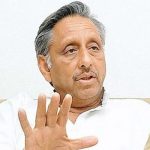 Mani Shankar Aiyar is an author, politician and former diplomat. He also had served as Indian Consul General in Karachi
Mani Shankar Aiyar is an author, politician and former diplomat. He also had served as Indian Consul General in Karachi
Courtesy: The Hindu (Posted on June 19, 2023)